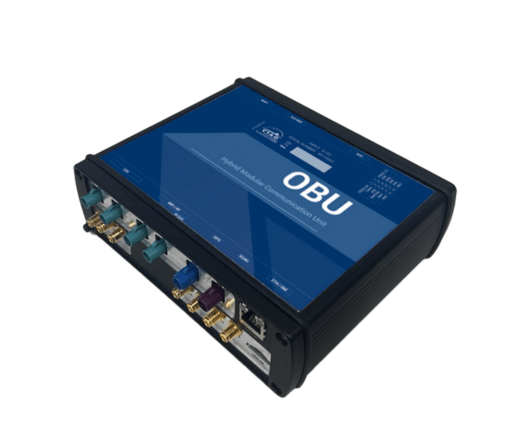
At CTAG, we develop and integrate complete Cooperative V2X (Vehicle-to-Everything) systems that enable real-time communication between vehicles, infrastructure, and traffic control centers. These technologies are essential to advancing toward a more connected, automated, and safer mobility ecosystem.
Our solutions comply with leading international standards (ETSI, ISO), allowing integration into urban, rural, and interurban environments. We offer Public Key Infrastructure (PKI) certificate management systems to ensure secure communications, along with a fully developed ITS stack for Day 1 and Day 1.5 services, autonomous vehicle applications, infotainment, and telematics.
In addition, our units are ready to operate in hybrid environments (ITS-G5 + C-V2X), enabling the deployment of cooperative services both in testing phases and real-world projects.

CTAG’s RSU (Road-Side Unit) is a compact and robust roadside device that enables bidirectional communication with connected and autonomous vehicles. It integrates multiple connectivity interfaces: ITS-G5 (802.11p), PC5 (C-V2X), Ethernet, WiFi, Bluetooth, and cellular networks (3G/4G/5G).
Designed according to automotive standards, its anodized aluminum casing and high environmental resistance make it suitable for urban, rural, and temporary pilot environments. It operates as a key node within the V2X ecosystem, transmitting traffic events, alerts, or conditions to vehicles in real time and connecting with the C-ITS Center using standards such as DATEX II. Its flexible architecture supports customizable software based on Linux and Java/OSGi, allowing adaptation to different operational needs.
CTAG’s OBU (On-Board Unit) is the core of in-vehicle connectivity. This embedded unit enables seamless and secure communication with infrastructure, other vehicles, and traffic management platforms. Compatible with ITS-G5, C-V2X, GPS, and 4G/5G technologies, the OBU is highly versatile and can be configured for real deployments or hybrid testing environments.
It features multiple physical interfaces (CAN, Ethernet, WiFi, Bluetooth, GNSS), internal memory, and a complete software stack based on European standards, fully developed by CTAG. Its modular design and low power consumption make it easy to integrate into a wide range of vehicles, enabling services such as Level 4 automated driving, infotainment, remote diagnostics, and IoT functionalities.


Copyright 2025 CTAG. Todos los derechos reservados
LEGAL
Términos y condiciones
Política de privacidad
Política de cookies
MAPA DEL SITIO
INICIO
BLOG
NOSOTROS
CONTACTO
CONTACTO
CTAG Centro Tecnológico de Automoción de Galicia Polígono Industrial A Granxa 36475 Porriño (Pontevedra) España.
Tel.: +34 986 900 300
Fax: +34 986 900 301
E-mail: info@brain4mobility.com